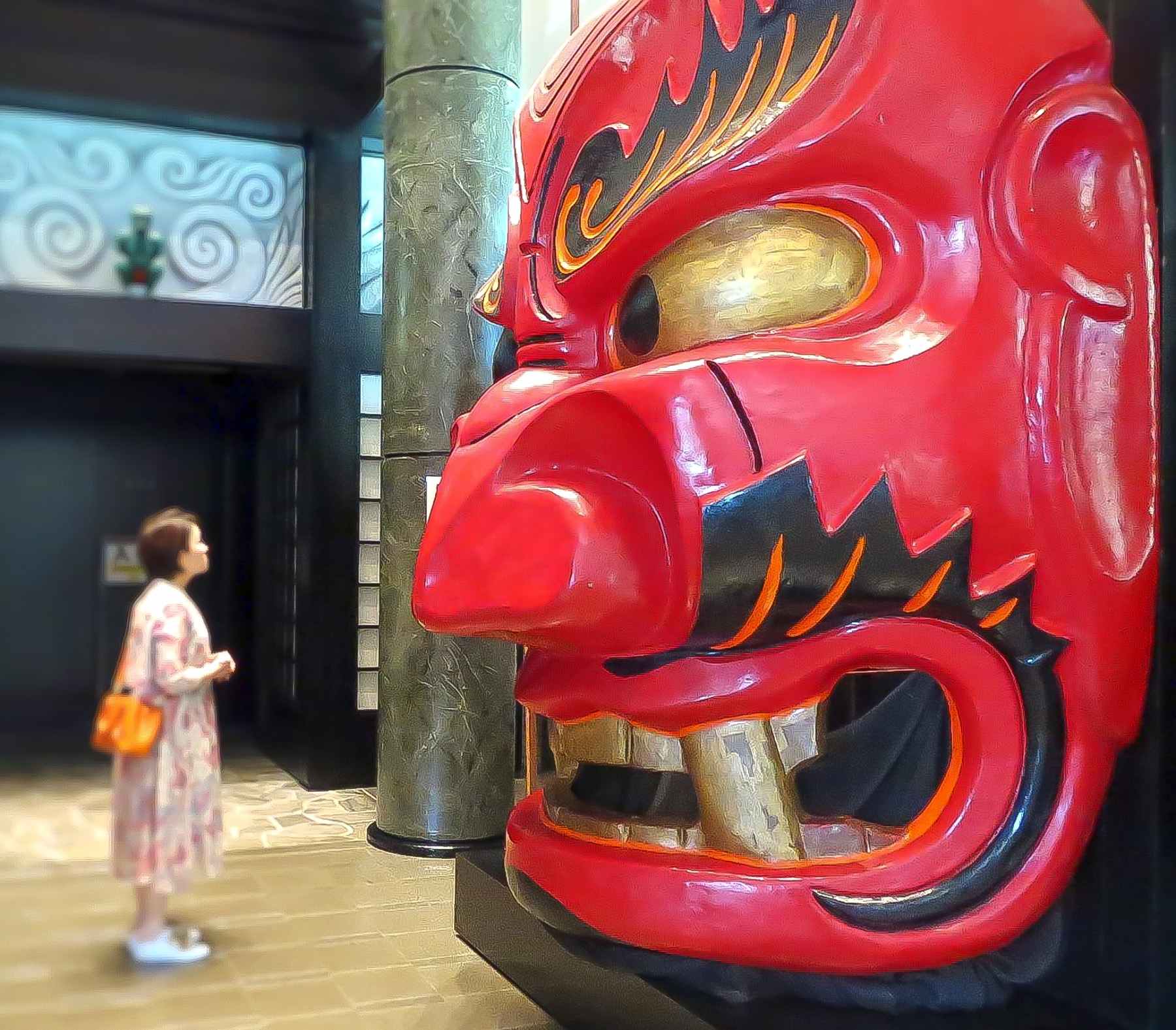The oni (鬼) stands as a prominent yokai (“strange apparition”) in Japanese folklore and local belief systems. Within the Japanese language, “oni” not only signifies a formidable supernatural entity but also serves as a prefix conveying connotations such as “potent,” “malevolent,” “terrifying,” “enormous,” and “awe-inspiring.” Therefore, it is not fully the Japanese equivalent of “demon.” In modern portrayals, oni are often characterized by two or sometimes a single horn adorning their heads, trimmed hair, jagged teeth, razor-sharp claws, and clothing composed of tiger pelts or fabric loincloths. Typically, they are depicted as imposing, brawny figures brandishing spiked clubs known as the kanabo.
What is Oni?
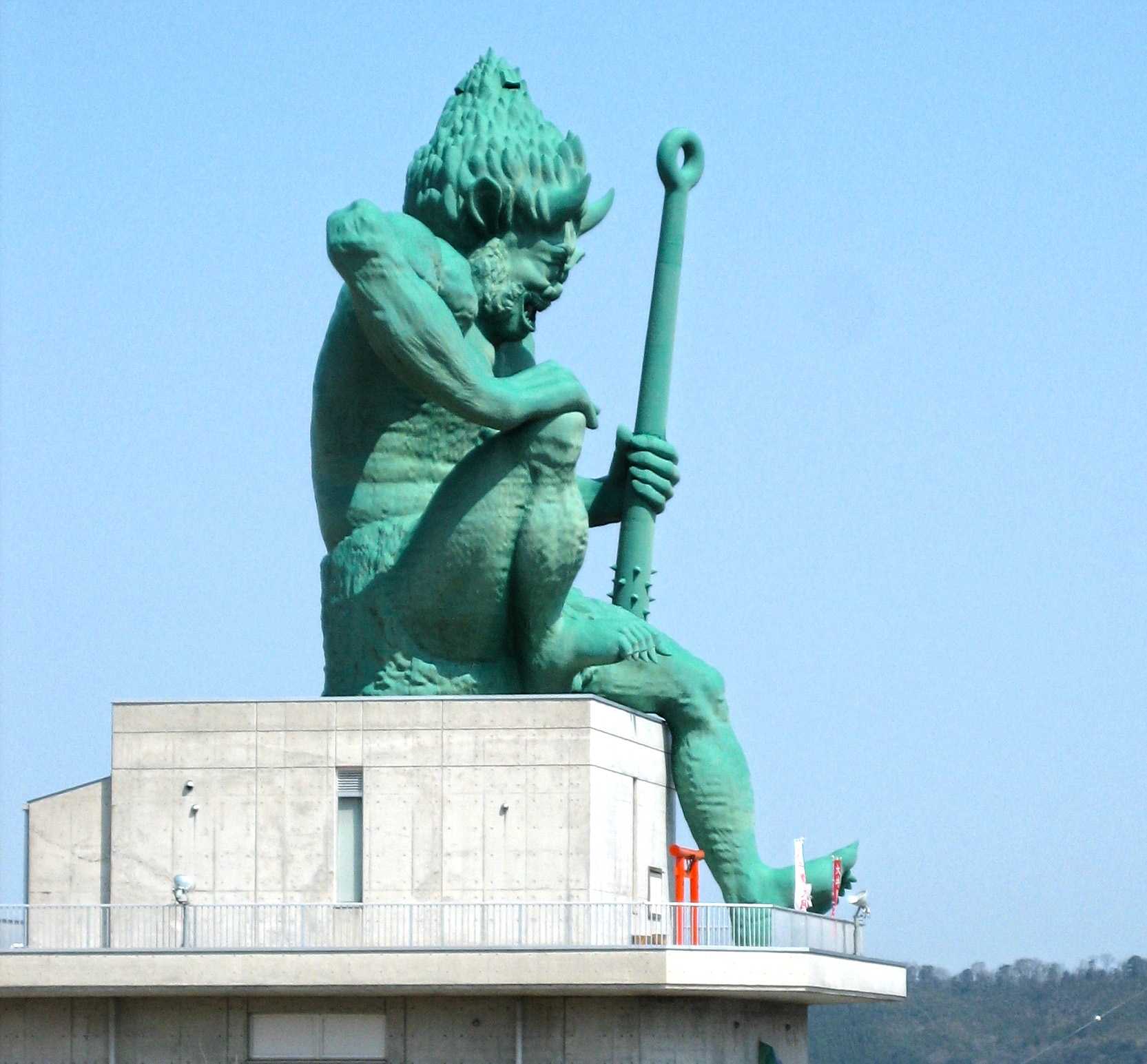
The skin tone of oni may span a spectrum of colors, including blue, red, green, yellow, and black, earning them titles like blue oni, red oni, green oni, yellow oni, or black oni. These colors find their origins in the combination of the Five Elements Theory and the Five Hindrances: blue corresponds to wood + anger, red to fire + greed, yellow to earth + desire, green to gold + sleep, and black to water + doubt. The original color linked to the element gold was white; it shifted to green in conjunction with the Five Hindrances Theory.
The conventional perception of oni often depicts them as wardens in the underworld, administering punishment to the departed under the jurisdiction of the King of Hell, Enma. At times, oni acquire suffixes such as “doji.” A well-known example is the Oeyama oni, also known as “shuten doji” (a mythical oni or demon leader of Japan).
Even in contemporary Japan, the oni legends endure, recounting tales of mountains and hilly terrain where oni were once believed to dwell.
Although “oni” is frequently synonymous with “malevolent” or “frightening,” instances arise where oni are venerated as guardians or divine beings. For instance, in Hōki Town, Tottori Prefecture, oni were revered as protectors of the community, while on Iwakiyama in Aomori Prefecture, oni are enshrined as deities in gratitude for their benevolent deeds. Across various regions of Japan, oni are regarded with positive sentiment and reverence, alongside their role in repelling malevolence during events such as Setsubun.
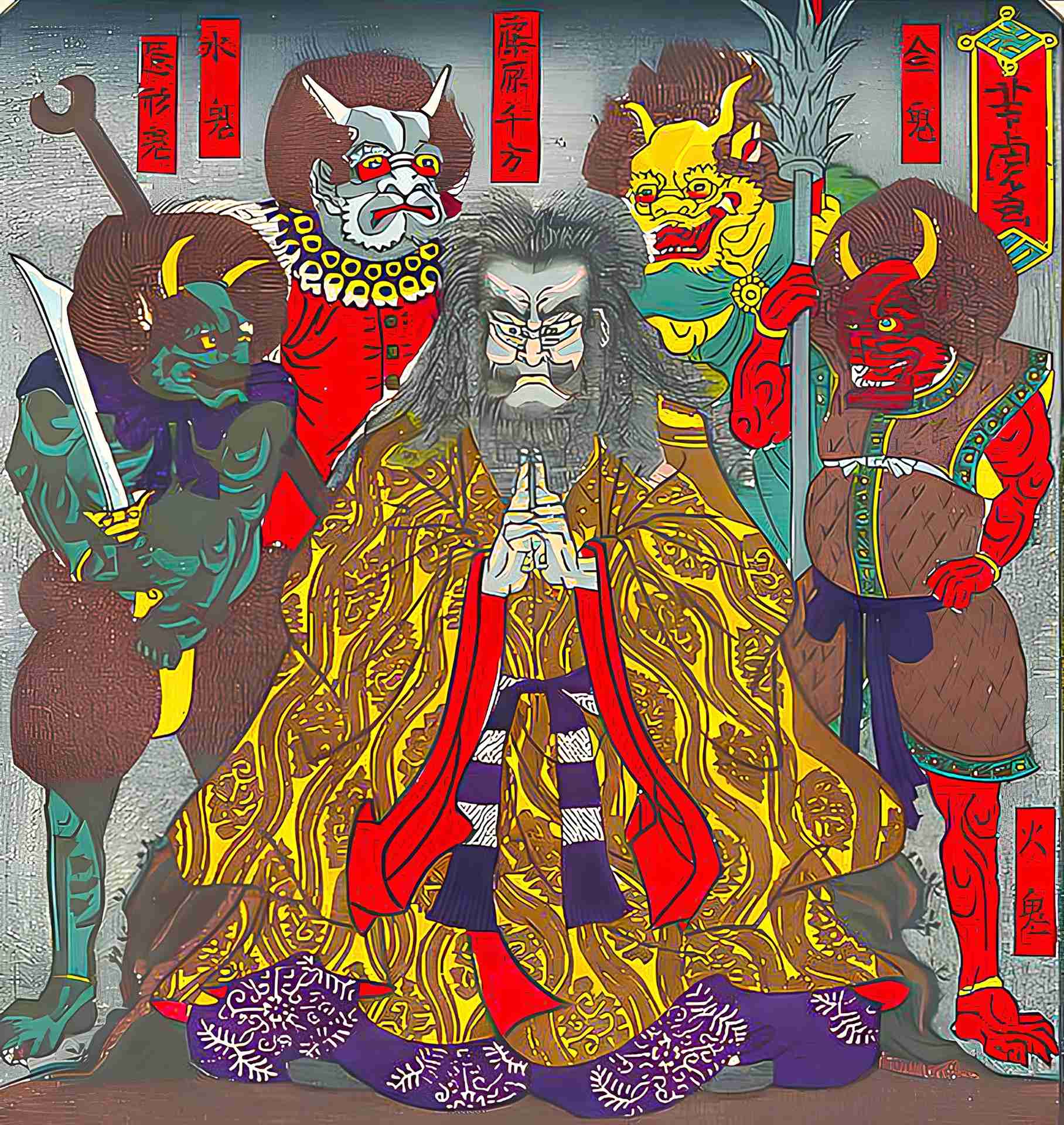
Conversely, in the realm of medieval Noh theater in Japan, oni are frequently portrayed as vengeful spirits or denizens of the netherworld. In traditional folk narratives, oni often assume the role of antagonists who eventually face retribution. The prevalent contemporary perception of oni as villains can be traced back to these narratives.
Therefore, Japanese oni embody a spectrum of appearances and attributes, spanning from “malevolent” to “virtuous” and “divine,” creating variable portrayals. Nonetheless, they consistently share characteristics denoting “fearsomeness,” “potency,” and “superhuman” qualities.
Diverse Interpretations of Oni
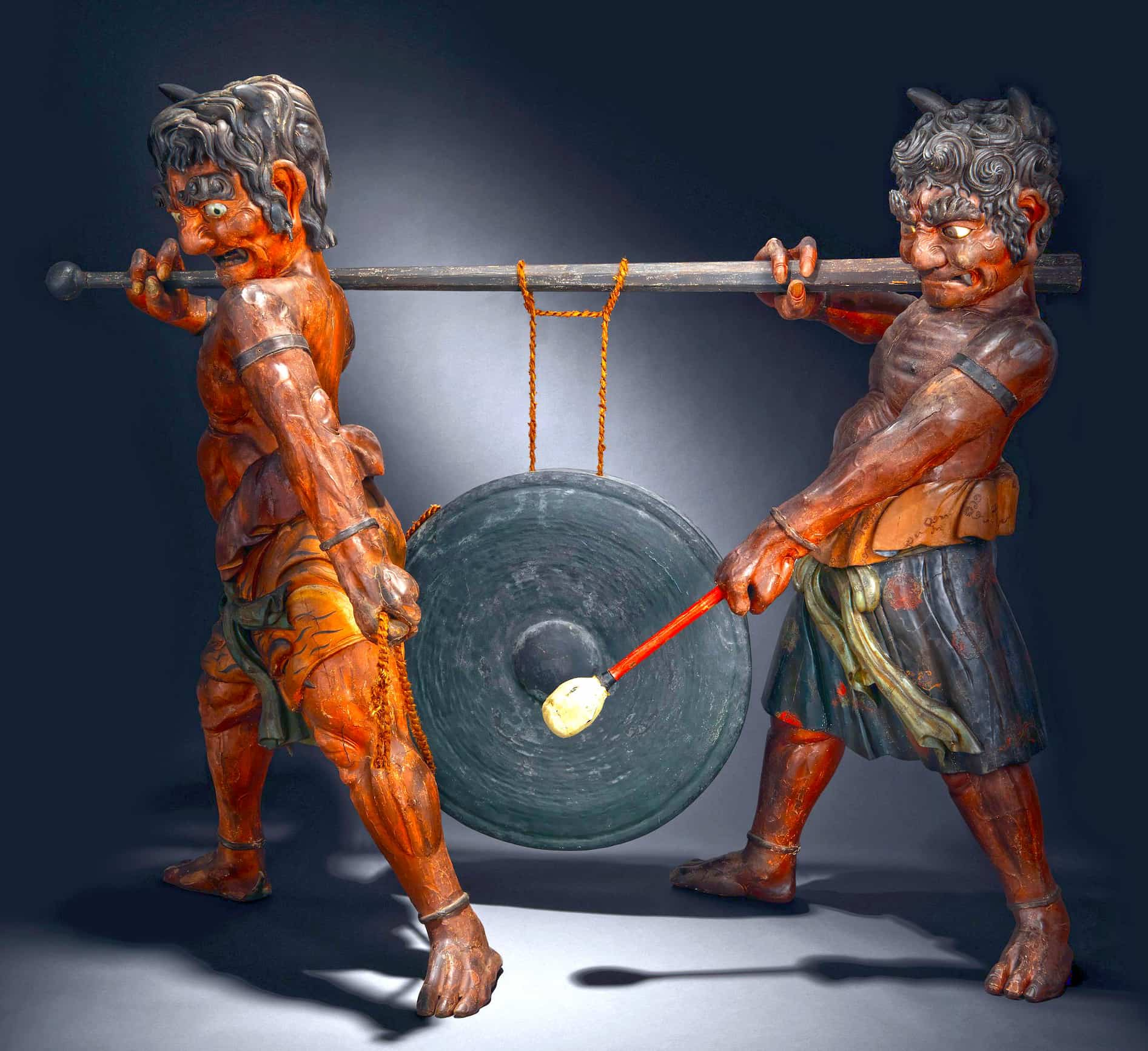
The oni are classified into five distinct categories:
- Folkloric oni, connected to ancestral and land spirits.
- Mountain religious oni, encompassing yama-no-kami (mountain deities) and yamabushi (mountain ascetics), like the tengu.
- Buddhist oni, which include malevolent spirits like yaksha and rakshasa.
- Human-like oni, symbolic of thieves and malevolent individuals.
- Oni with transformation narratives, those transforming into oni due to grudges and anger.
Originally, the Chinese character “鬼” (oni) denoted “the soul of the deceased.” For instance, “餓鬼” (gaki) referred to the hungry souls of the deceased, while “鬼哭” (kikoku) represented the lamentations of these souls. In contemporary Japanese, “オニ” (oni) occasionally refers back to its original meaning as “the soul of the deceased.” Abroad, death is sometimes expressed as “becoming a foreign oni” or “becoming an otherworldly oni.”
The concept of oni was initially imported from China, where it referred to the spirits of the departed, and it arrived in Japan during the latter half of the 6th century. It coexisted with Japan’s indigenous notion of “oni,” signifying ancestral and land spirits. These oni were often depicted with a single eye, sometimes associated with the mark of a one-eyed deity or viewed as representations of mountain deities.
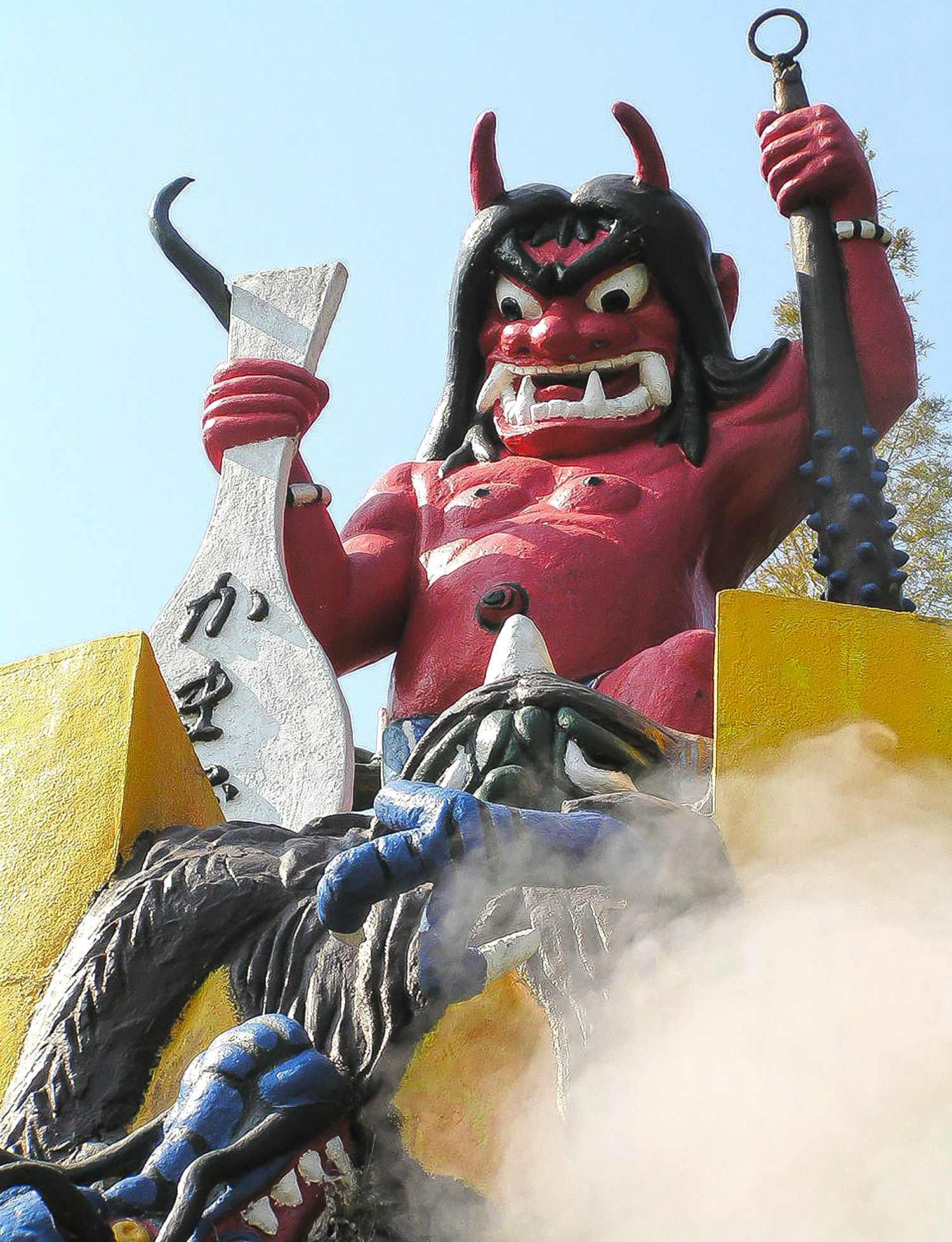
In this context, the one-eyed oni more closely resembled ethnic gods than the spirits of the deceased. Furthermore, the “Kami” or “Mono” mentioned in the “Nihon Shoki” as “wicked gods” were also conceptualized as oni, representing enigmatic beings. The image of “fearsome man-eating oni” in folktales evolved from these “Kami” and “Mono,” influenced by Buddhist protectors, monsters, and supernatural creatures. This mirrored the anxieties and fears of the Heian-era Japanese populace.
The oni are seen as supernatural beings that disrupt our regular existence. The diverse portrayals of oni arise from the varied depictions of otherworldly beings, which are influenced by society and the era.
Those who defied the court, violated the law, or resided in the otherworldly mountains, such as blacksmiths, were labeled as oni. The concept of oni expanded boundlessly, encompassing people’s grievances, the rakshasa of hell, yaksha, and mountain monsters, as they were likened to the fantasy realm of the otherworld.
Many oni in tales spanning from the Heian period to the Middle Ages are portrayed as embodiments of vengeful spirits—terrifying creatures that feast on human flesh. In the northwest of Kyoto, there existed a notorious oni leader known as “Shuten-doji,” who ruled over a gang of oni, including Ibaraki-doji.
Shuten-doji was described as having fiery red hair, horns, a thick beard, intertwined hair, and bear-like limbs, and he regularly indulged in consuming the flesh of young women abducted from Kyoto. In Ise Monogatari (The Tales of Ise), there is an account of an oni devouring a woman in a single gulp while sneaking away with a woman at night.
This tale gave rise to the term “oni-ippuku” (or onihitokuchi, literally “oni bite”), signifying an extremely dangerous situation as well as handling things swiftly with ease.
The Japanese people interpreted this as a phenomenon where “otherworldly entities manifest in this realm” during times of societal upheaval, such as wars, disasters, and famine, where a person’s body vanishes due to the intrusion of oni into our world.
Oni are often depicted as visitors from another dimension or as demonic entities that abduct people to the other side, and occasionally, they bestow blessings, as evidenced in folktales like “Issun-boshi” and “Lump-Removing Old Man’s Oni,” (Kobutori Jiisan). Mt. Oeyama’s renown as a place linked to the otherworld stems from it being considered a mountain relative to the capital city, giving rise to numerous oni legends in regions bordering these mystical peaks.

During the Heian era, there existed no clear distinction among various beings associated with the notion of “oni.” These encompassed entities from Buddhist scriptures, such as demons, mononoke, and various spirits depicted as oni, as well as oni appearing as deities of disease.
These oni were often characterized by shared traits including a bulky physique, a singular eye, a gaping maw, horns, a scarlet loincloth, and hands and feet with three digits. These characteristics were significantly shaped by the imagery of demons described in Buddhist texts. In the case of mononoke, diverse visual inspirations from texts like “Shanhaijing” existed, but they all shared the theme of evoking fear in the people of that era.
When tracing the evolution of the oni’s form, early oni were consistently depicted in female forms, denoting vengeful spirits in stories such as “The Tale of Genji.” Nonetheless, as exemplified in the tale of Ichiijo Modoribashi by Watanabe Tsuna, they initially took on female forms.
Etymology of Oni
The term “oni” is believed to have its origins in the word “onu” (隠), originally signifying something concealed or transcendent.
In antiquity, it was pronounced “mono” before evolving into “oni.” The “Fussoku Ishi Uta” from the Nara period records “four snakes (hemi), five mono,” while “The Tale of Genji” mentions “feeling threatened by mono.” These “mono” were spirits imbued with malice and grudges, carrying a malevolent connotation (not just mere apparitions but entities that brought curses).
Human-Oni Relationships
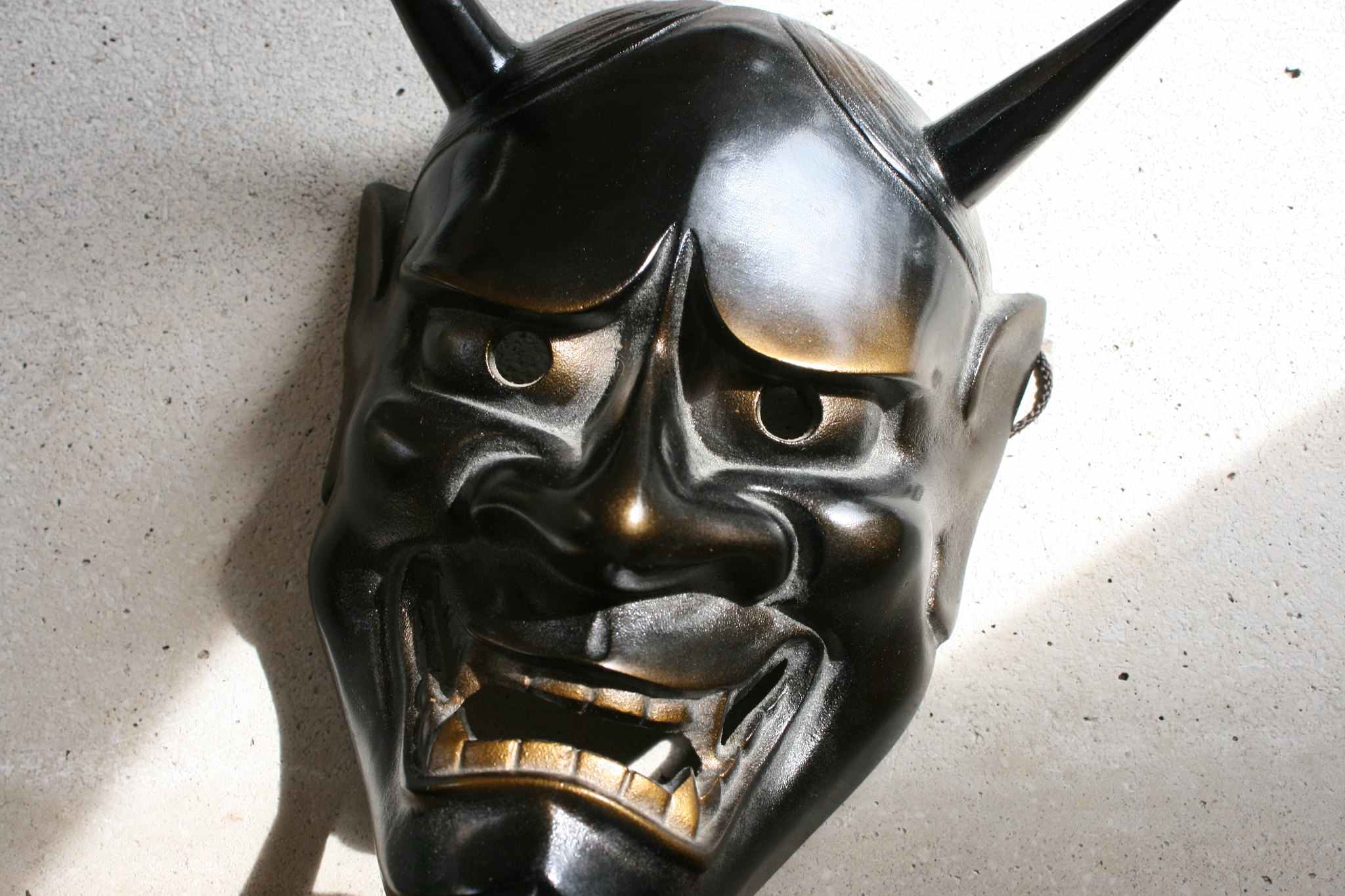
While accounts exist of oni assuming human guises to harm individuals, there are also narratives of humans metamorphosing into oni due to feelings of animosity or envy. Instances of this can be found in Noh plays like “Kannawa” and “Momijigari,” telling the tales of women transforming into oni due to jealousy. The “Hannya mask” serves as a classic representation of this transformation.
In “Ryojin Hisho” (compiled during the late Heian period), there’s a poem describing a woman’s curse transforming someone into an oni sporting three horns. This suggests that by the close of the 12th century, the concept of cursing someone into becoming an oni with horns had taken root. This differs from cases where individuals willingly embrace the oni persona, as it entails an attempt to transform someone else.
Oni such as Maegi (前鬼) and Uragi (後鬼), who serve the ascetic En no Gyoja in the Shugendo tradition, have descendants who are humans and have founded the village of Maegi (present-day Shimokitayama Village).
Analogous examples can be found in Buddhism, like the legends of Yase Village in Mount Hiei, where the forebears claim lineage from oni who served the renowned Buddhist teacher Dengyo Daishi (Saicho). These figures are not always inherently malevolent, and their transformation into oni is perceived as a result of their embrace of Buddhism.
As an exceptional illustration, a tale in “Konjaku Monogatarisu” (Tales of Times Now Past) Volume 20, Story 7, narrates a close relationship that flourished between a holy person from Yamato Province and a supernatural being. This holy individual, originally from Shinano Province, aided in exorcising the supernatural entity, and they grew close. Later in the narrative, following the survival of an assassination attempt and a fall from a cliff, the holy person confesses to having forsaken their path of sanctity and becoming an “oni of love.”
The depiction of this oni entails nudity, a bald head, a height of eight feet, obsidian-colored skin, metallic-bowl-like eyes, a gaping maw with sharp teeth and fangs, and a crimson loincloth adorned with a mallet at the waist.
While not a menacing presence like a marauder, they are perceived as an oni (or possibly a tengu) at the imperial court, and the holy individual themselves acknowledges their transformation into an oni of love. Their association with Fujiwara no Akiko endured until her passing.
Buddhistic Oni
Within Buddhism, a belief emerges that those consumed by greed in their mortal existence plummet into the place of famished oni (“preta” or hungry ghost) upon their demise, metamorphosing into ravenous specters (as depicted in the story “Jikininki” or human-eating ghosts).
In the infernal dominion, oni are purportedly relegated to subservient roles under Yama, the sovereign of the netherworld.
Amongst folk rituals, ancestral spirits occasionally take on the visage of oni, and ceremonies are convened to beckon these infernal entities in various locales during Obon (Bon) and the New Year festivities (such as the Shujo Onie festival in the Kunisaki Peninsula and the Hanamatsuri festival (Shimotsuki Kagura) in Mikawa Province).
Chinese Oni
In the context of China, the term “oni” (pinyin: gui) alludes to departed spirits, akin to the term “yūrei” or ghost in Japan. In the Chinese language, it is regarded as impolite to directly address something as an “oni,” so a roundabout reference is used. This notion has exerted an influence on Japan, where expressions like “entering the realm of oni” are employed to denote death.
In China, the word oni also signifies spirits appearing as humans, often as the ethereal form of young women. These apparitions adopt human form and are often depicted as attractive, longing for emotional connections with the living. Japan also saw instances where educated Heian aristocrats employed the term oni to refer to spirits.
The “Kibi Daijin Nittō Emaki” (Scroll of Minister Kibi’s Adventures in China) from the end of the 12th century portrays the narrative of Abe no Nakamaro, who perished in Tang China, adopting the form of an oni to express concern for his family. In this portrayal, he materializes as an oni in a scarlet loincloth, bare-bodied, sporting a horn on his head, erect hair, red skin, a gargantuan mouth adorned with serrated teeth, and three digits on each extremity. When Nakamaro is rebuffed for his inhuman appearance, he returns subsequently in proper attire, yet his red skin and three fingers remain unconcealed.
In the Chinese context, oni does not exclusively pertain to departed spirits but encompasses otherworldly entities and monsters in a more general sense. According to Shigeki Kaizuka, the character “鬼” is an amalgamation of “由” and “人,” symbolizing an individual (人) adorned with an extensive mask (由) veiling their face, emblematic of the shamanistic practice of spirit possession, in which shamans would use masks symbolizing spirits.
The Soft Spots of Oni
It is said that oni have certain dislikes. Oni are known to dislike strong odors and the abundant smoke and smell produced when grilling sardines. Oni also fear getting their eyes pricked by the thorns of holly leaves. Therefore, during the festival of Setsubun, there is a custom of driving away oni who try to enter from the boundary between seasons by decorating the entrance with holly branches and sardines, and this protective custom is called “Hiiragi Iwashi” (Holly and Sardine Head).
Origin of Oni
Smithing
The theory posits that blacksmiths served as the inspiration for Oni. Blacksmiths were individuals immersed in metallurgical endeavors, encompassing activities such as mining, metal refinement, and the fabrication of metal goods.
Within this conjecture, there is a substantial overlap between regions in Japan housing Oni legends and areas steeped in mining, wherein Oni are often depicted as blacksmiths. Therefore, Oni might have been rooted in blacksmithing. Although met with initial resistance and skepticism, this theory garnered increasing scholarly support.
Ezo
In the northeastern reaches of Japan, where Sakanoue no Tamuramaro conducted military campaigns against the indigenous Ezo people, numerous legends, including the Sakanoue no Tamuramaro legend, assert his triumph over Oni with divine protection. A legend even posits that the Ezo chieftain Ootakemaru (“Demon king of Suzuka Mountain”) was an Oni.
Foreigner
The “Danka Fuzhi,” composed during the Edo period, advances a hypothesis proposing that Oni may have been foreign pirates who made landfall in Japan. During the Meiji era, a prevailing belief arose suggesting that Oni were of Russian descent. This notion was influenced by the anti-Russian sentiment of the era, stemming from events such as the Three Nations Intervention and the Russo-Japanese War. Furthermore, the presence of a naval base in Maizuru near Mount Oeyama, where Oni legends proliferated, contributed to this hypothesis.
References
- Featured Image: Photo by Ty19080914, CC BY SA 4.0
- Japanese Demon Lore – Google Books
- Japanese Religion – Google Books


